“A five-year term at 2,000 hours per year will sap 10,000 hours, or substantially all of the unit’s usable life,” says Markison. “This can leave users at a wall at the end of the term, with few affordable options for extensions. A four-year term at 2,000 hours might make better sense, with plans to evaluate options when the time comes.”
Preventing end-of-term dilemmas
Not having a plan for the end of the lease term is where even a perfectly tailored agreement can go wrong. “A lease should force you to look at things at the end of the term,” says Chambers. “That can be a great tool for evaluating the state of the equipment and the fleet, but is too often a missed opportunity.”
“One thing that many large lessees have issues with is lease expiration tracking,” says Bailey. “Many times the leases go past maturity, which ends up costing additional maintenance money. Mom and Pop businesses can benefit from the same thinking.”
Markison recommends that large fleet owners begin planning at least six months to nine months before the end of the term. “Check the lead time for your own internal approval processes and work backward from there,” he says. “Whether leasing or buying, the challenge is getting through the capital approval process fast enough or deciding ahead of time what their triggers will be for action.”
For many, delays around lease renewals have to do with the relative difficulty in securing capital expense dollars, even as maintenance dollars are easily found and spent. “I’ve seen customers who had short-term rentals for 18 months to 24 months,” says Markison. “Getting capital expense money was hard, and the short-term view prevailed. There was personnel turnover and they took the path of least resistance. They were paying 30 percent or 40 percent more than they would have been paying if they were in the right lease.”
It may be that the equipment has been under-utilized, and it doesn’t make sense to replace it at the end of the term. In this case, default month-to-month lease extensions are rarely the best option. It’s often possible to negotiate a new lease term and potentially end up with an even lower monthly payment, according to Goodwin.
“We saw a lot of customers over the last few years who extended their leases month to month,” says Goodwin, who notes that a lot of customers were in a wait-and-see mode from 2010 through last year. “They had a lot of under-utilized equipment as a result of the downturn. We’re to the point now where we’re seeing equipment come back that has been extended for a couple of years, and they’re finally confident and financially comfortable enough to return it. That’s a new trend.”
The new agreement
Those finally getting around to replacing equipment will enjoy a variety of options that were not available to them five years ago, such as non-traditional lease terms, early termination option leases, flex leases and lease-by-the-hour leases.
“Many customers are asking for some degree of flexibility in the lease that either allows them to adjust the fleet to the right specifications on the fly or return equipment early—at a reduced cost—should their business needs decline,” says Bailey.
As opposed to “ballparking” a 36-, 48-, or 60-month lease assuming a certain number of hours per year, customers can expect dealers and finance partners to present a much more nuanced approach, especially when accurate utilization data has been collected. Traditionally, leases were ideal for customers with utilization in the 1,000-hour to 3,000-hour range. Now, those running 700 hours who might have had to rely on rentals to meet their needs can enter into lease agreements, according to Toyota’s Piot.
The problem with renting is that, with intermittent periods of heavy usage and idle time, it’s hard to nail down costs over the long term. Leases offer the benefit of predictable costs, and often contribute to significant overall savings. The move from renting too much to leasing just right could potentially halve your fleet costs, Piot says.
With detailed data in hand, a customer might also find benefits beyond structuring the right lease term for the utilization. Markison offered the example of customers who have worked with their finance partners and equipment manufacturers to guarantee the residuals at the end of the lease.
In other words, they know utilization and working conditions with such certainty that they also know the value of the truck at the end of the term. This eliminates the need to finance credit risk, which can create as much as a 2 percent reduction in the interest rate. For a $20,000 lift truck, that adds up to a savings of nearly $1,300, or 7 percent, in lease costs over five years.
“This does not even require advanced fleet management technology or practices on the part of the customer,” says Markison. “It just takes a customer savvy enough to know it’s an option.”
Advanced telemetry, on the other hand, might facilitate “power by the hour” options that allow a lessee to only pay over a lease term for the hours that they utilize the lift truck. If a lift truck is used for 20 hours one month, the customer will be billed for 20 hours. Goodwin says that such programs enable true matching of the lease term to the economic life of the truck, as well as true matching of a customer’s expense to their revenue.
“Recently, lease-by-the-hour programs are on the cusp of being more mainstream as the key to its success for both the lessor and the lessee is the accurate and cost effective capture of usage data,” says Adams.
The key to fleet savings with regard to financing, says Markison, is to ask questions and be ready to answer them when a dealer or sales representative inquires. “Don’t assume you only have one option,” he says. “It’s a matter of investing some time to explore.”



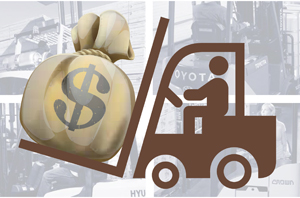
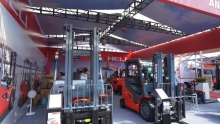
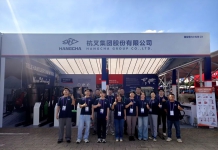


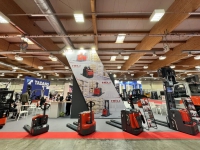


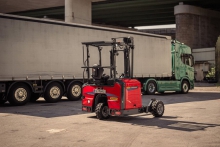

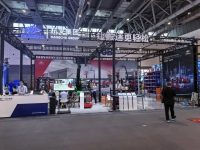


 粤公网安备 44010602003952号
粤公网安备 44010602003952号